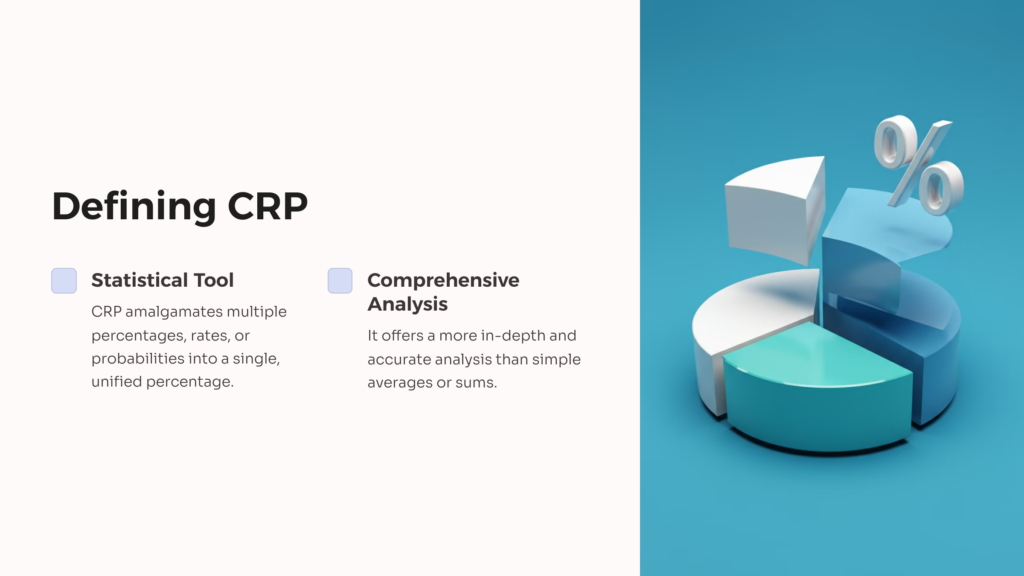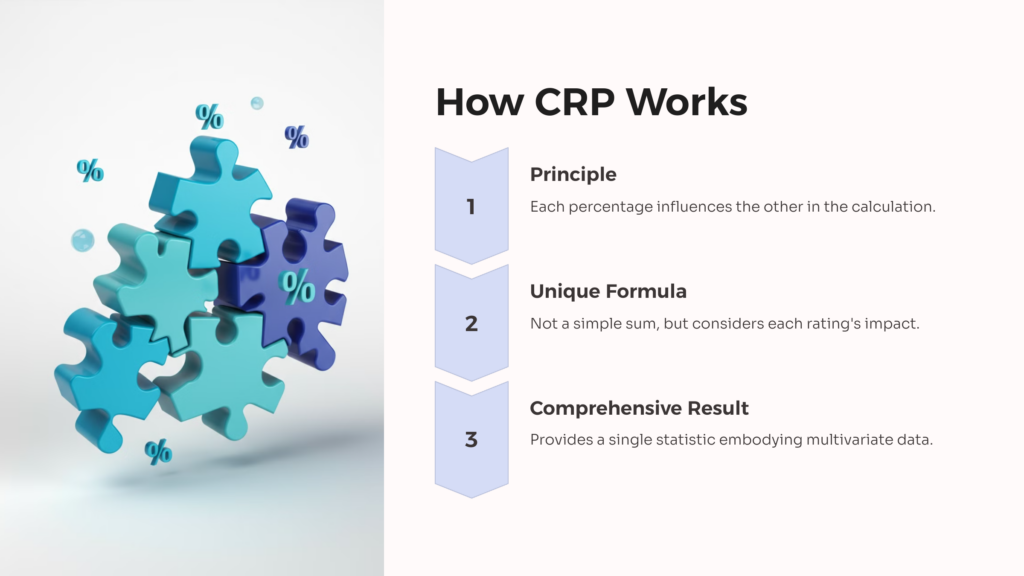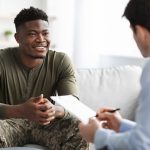One of the crucial aspects of quantitative analysis is the Combined Disability Rating Percentages (CRP). This often-underestimated metric plays a significant role in evaluating performance, project outcomes, and overall growth. With a profound impact on economics, business, and statistical analysis, understanding CRP is of paramount importance. In this extensive article, we take a deep dive into the realm of CRP, aiming to provide a comprehensive understanding of its concept, calculation, factors impacting it, and its pros and cons.
Definition of Combined Rating Percentages

CRP or Combined Rating Percentages is a statistical tool used to amalgamate multiple percentages, rates or probabilities into a single, unified percentage. Not to be mistaken for an average or mere sum, CRP offers a more in-depth and accurate analysis by providing a single comprehensive statistic, embodying the essence of the multivariate data.
How Does It Work?

Crucially, the CRP operates on the principle that each percentage, rate, or probability influences the other. The calculation is intricately designed considering that individual ratings affect the combined ratings. This combined VA rating is not simply the sum of ratings; instead, it is calculated by a unique formula that takes each rating’s impact into account.
The calculation method for Combined Rating Percentages usually follows a mathematical formula, factoring the individual percentages and their impacts on the overall outcome.
Key Factors Impacting Combined Rating Percentages
Various elements are taken into consideration in the calculation of CRP. The individual percentages are the basis and most significant elements. Each of these individual rates or percentages is weighed according to its measurability, importance, relevance, and potential impact on the overall outcome.
The CRP’s outcome is influenced at large by the variables we incorporate as individual rates or percentages. Variations in these elements can significantly impact the final combined rating. Adjustments in weighting, tweaks in the individual ratios, or shifts in relative importance can all alter the combined rating.
The Process of Calculating Combined Rating Percentages
To calculate the CRP, we start with the highest percentage and subtract it from 100. Multiply the result by the second highest percentage and divide by 100. Subtract this new result from your first percentage. Continue this process to include all your percentages. The final number is the combined rating.
Common Mistakes to Avoid When Calculating
A common error when calculating CRP is treating it as a straightforward sum or average of individual percentages. It’s vital to understand that the principles of combining percentages work differently. Another prevalent mistake is the incorrect ordering of percentages, which can drastically skew the result.
Examples of Combined Rating Percentages Calculations
Formula Application
Here’s an example: If there are three rates- 70%, 50%, and 20%. The combined rating is calculated as following:
Start with 70 (the highest percentage). Subtract 70 from 100, getting 30. Multiply 30 by 50% (the second-highest percentage), to get 15. Subtract 15 from 70, giving you 55. Finally, calculate 45 (100 minus 55) x 20% to get 9. Subtract 9 from 55 to get the combined rating of 46%.
Interpretation of Results
CRP results interpretation depends on the context. In the previous example, a 46% combined rating implies that the overall efficacy or performance is at 46% when considering all rates. It’s a cumulative score, indicating the overall outcome when all rates influence each other.

Advantages of Combined VA Disability Rating Percentages
Leveraging CRP offers a comprehensive view of performance or impact by considering multiple metrics. It mitigates over-reliance on a single percentage and ensures an in-depth, combined consideration. It’s beneficial in understanding the overall impact, calculating results more accurately, and in making efficient decisions.
Disadvantages of Combined VA Disability Rating Percentages
While powerful, CRP also has its limitations. Depending on the diversity, complexity, and amount of the data, calculating CRP can be complicated. It also assumes equal impact, which might not always be the case. Misapplication can lead to critical errors and misinterpretation.
Conclusion
Combined Disability Rating Percentages is a critical tool in understanding performance or impact across multiple metrics. Its strength lies in its holistic approach—which, though not devoid of limitations—can provide substantial insight if used correctly. Hopefully, this article has provided a comprehensive overview of CRP—its calculation, factors influencing it, and its potential benefits and limitations.
Consider utilizing CRP in your respective contextual variables. Observe the shift in perspective it brings, from a singular to a uniform view of percentages. Witness the difference, unlock the layer of comprehension it provides, and contribute further to the evolving world of quantitative analysis.
 AllVeteran.com Advisors
AllVeteran.com Advisors
With expertise spanning local, state, and federal benefit programs, our team is dedicated to guiding individuals towards the perfect program tailored to their unique circumstances.


















